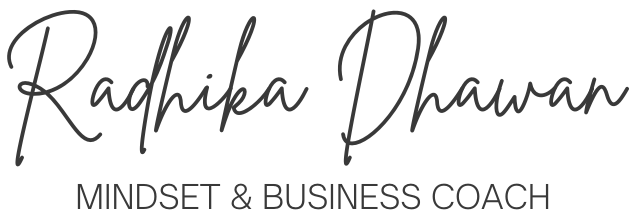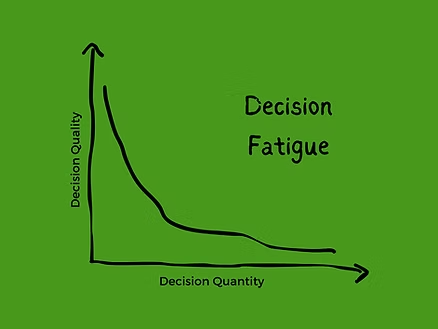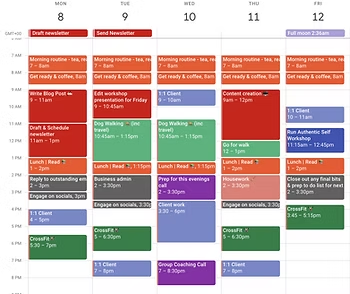Overcome Instant Gratification: The 10/10/10 Rule
Making good decisions is a vital life skill but in a world filled with innumerable decisions and competing priorities, it’s easy to feel overwhelmed, biased or unsure about the best course of action.
Let’s understand this, most of our decisions are based on emotions – our brain feels a certain way and that’s why we act. Unfortunately, emotions are short-lived and fleeting. What felt good five minutes ago is now a source of regret.
That's where the 10/10/10 rule, introduced by Suzy Welch, comes to the rescue.
This powerful strategy offers a simple yet effective framework for decision-making, enabling us to:
-
gain clarity
-
align our choices with our long-term goals & values
-
make better-informed decisions
The Framework
“Happiness can be defined as the fruit of the desire and ability to sacrifice what we want now for what we want eventually.” – Dr. Stephen Covey
The 10/10/10 rule is a simple yet effective framework that encourages us to evaluate the consequences of our choices from three different time perspectives: the immediate, the short-term, and the long-term.
When faced with a decision, ask yourself:
-
How will I feel about this decision in 10 minutes?
-
How will I feel about this decision in 10 months?
-
How will I feel about this decision in 10 years?
By considering the impact of our choices across these three time horizons, we can better assess their potential outcomes and align them with our values and goals.
Taking a longer-term perspective gets your future self involved (who will thank you btw): your goals, your dreams, the kind of person you want to be, and re-establishes — when you need it most — continuity between today you and 10 months, and 10 years from now you.
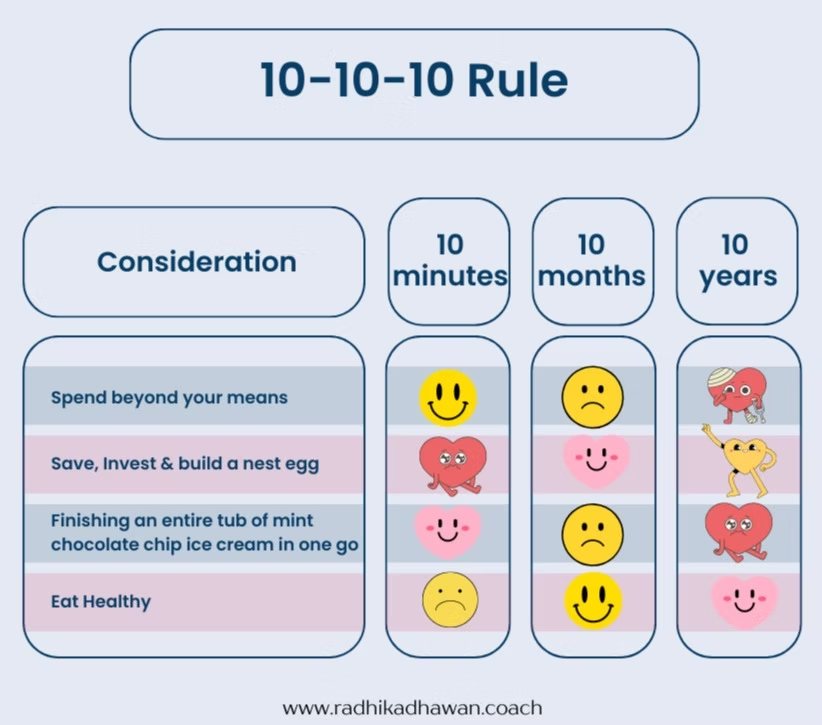
This method forces you to think further, think smart, and assess the situation by how you would personally respond given the timeline.
It saves you from a typical immediate reaction that could impact how you will be in the long run.
When to Use the 10/10/10 Rule
The 10 -10 -10 rule is especially valuable when faced with significant decisions that have far-reaching consequences. It can be applied in various aspects of our lives, including personal relationships, career choices, health related decisions, financial matters, and even day-to-day tasks.
Your brain is hardwired to look towards short-term pleasure. However, looking at long-term gratifications and their ramifications allows you to make smarter decisions.
The answers usually tell us what we need to know not only to make the most coherent move but also to explain our choice to the family members, friends, or coworkers who will feel its impact.
Why the Rule is So Great
-
Expanded Perspective: By considering the outcomes of our choices in different time frames, we escape the confines of the present moment and gain a broader view. This broader perspective empowers us to make informed decisions that align with our long-term vision and aspirations.
-
Emotional Clarity: Often, we make decisions driven by intense emotions or immediate desires. The 10/10/10 rule encourages us to step back and assess our emotions from a more rational standpoint. By contemplating how we might feel about a decision in the future, we can temper our emotions and make more balanced choices.
-
Alignment with Long-Term Goals: By evaluating decisions through the lens of 10 minutes, 10 months, and 10 years, rule acts as a guiding compass, allowing us to prioritise our actions based on their long-term effects rather than succumbing to short-term impulses or immediate pressures.
Possible Pitfalls
While the 10/10/10 rule offers numerous advantages, it’s important to be aware of potential pitfalls
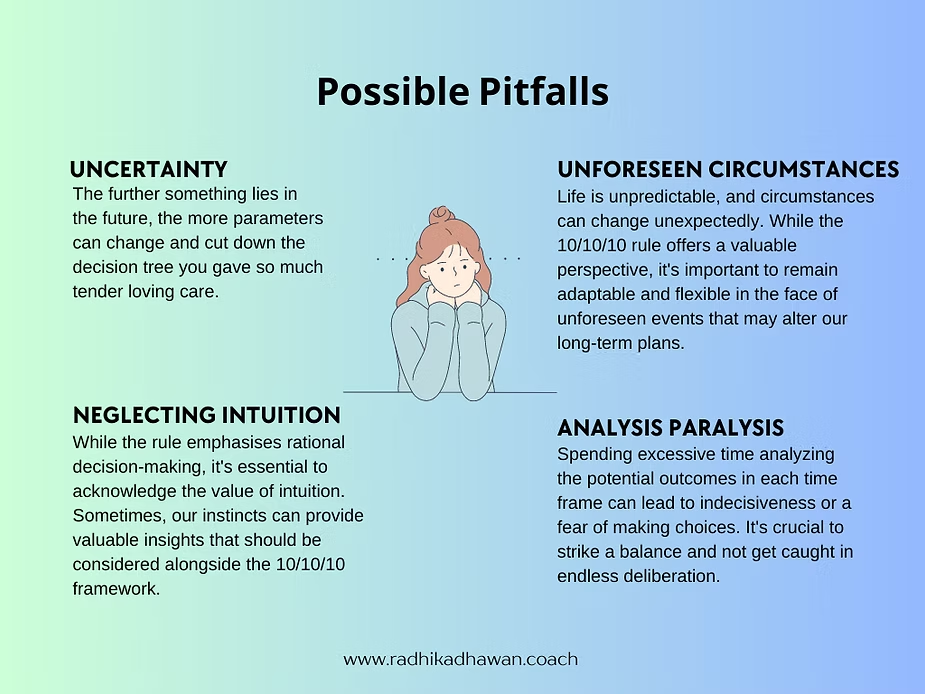
How to really use it
Here I am adapting Ben Meer’s 3 simple application steps:
Step 1: Get a pen and paper.
Digital notes also work. I, however, am an old school girl and believe putting pen (or pencil) to paper is way more effective as it engages your whole brain in the activity.
Step 2. Create 3 columns across the top of the page: 10 minutes, 10 months, and 10 years.
Step 3. Write down how you will feel about the decision across these 3 time zones.
Consider the impact on your health, relationships and finances.
Use this journaling exercise to build the habit of the 10/10/10 Rule. Writing it down is particularly helpful for big and difficult decisions.
Over time, you’ll internalise this process. Then, with practice, you can filter decisions through the framework in your head—with greater consistency and speed.
Conclusion: Better Decisions, Better Life
I encourage you to try out the 10/10/10 rule or make your own decision timeline that enables you to make the best choices for yourself and others!
Making smart decisions isn’t impossible, but it requires a certain way of thought. You have to avoid the bias of short-term emotions and fleeting feelings and instead think long-term.
The 10/10/10 rule makes long-term thinking easy and practical. It can be applied to small everyday choices as well as potentially life-altering decisions. Think not only about how you feel in the moment, but also ten minutes, ten months, and ten years from now. Then, decide accordingly.
Living in the moment can feel great. But in order to create lots of great moments, you have to make smart decisions and think long-term.
If you have a big decision in life you’ve put off, then now is the time to use a different approach and make a better choice.
Remember, everything it takes to achieve excellence, you already have within you!
I’m rooting for you!

XO

Was this helpful?
I’d love to hear your thoughts.
Leave a comment below and tell me what resonated and what techniques are you going to implement.
PS: If you feel stuck or overwhelmed or any other consequences of making too many decisions book a 30 minute Discovery Session where we can identify and potentially overcomes the challenges and gauge if we are a good fit for each other.
